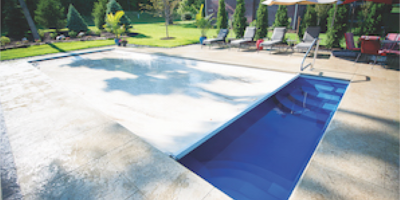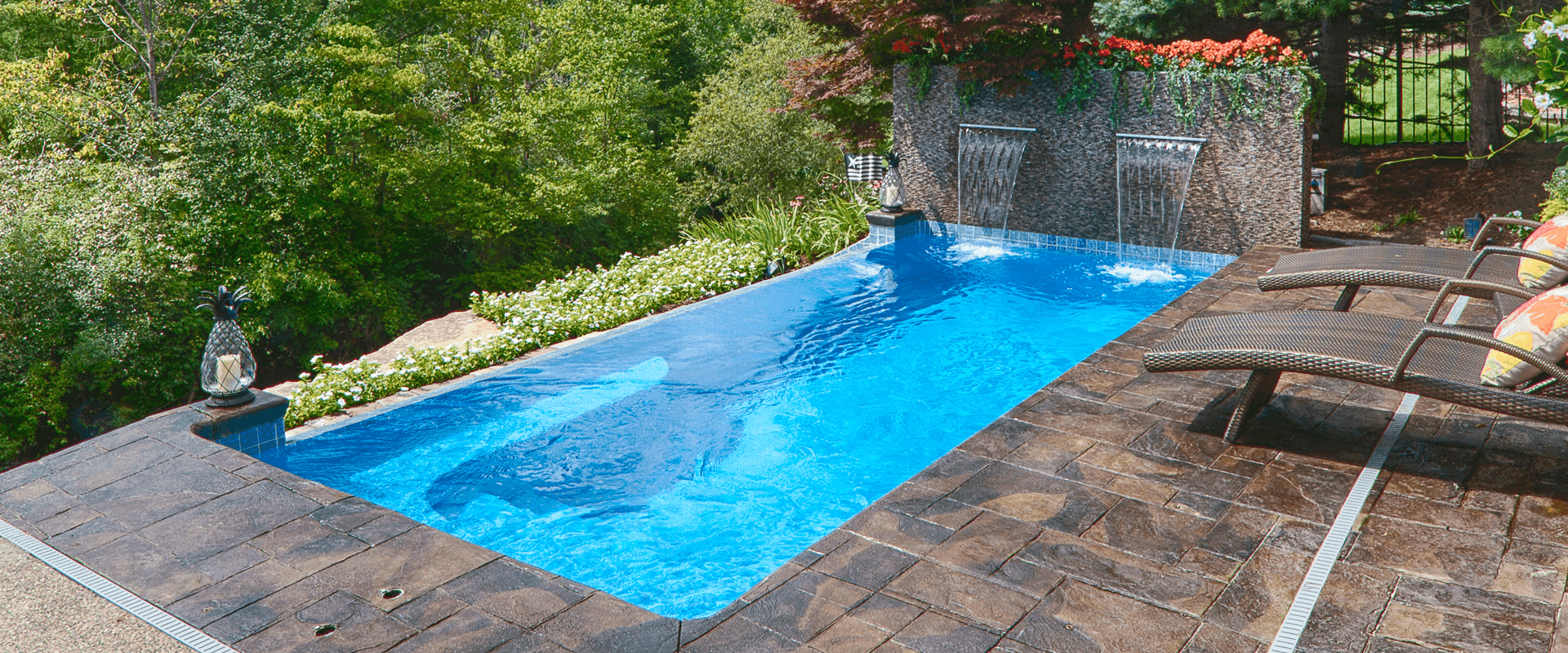877-929-7665
When Should You Open Your Pool
When spring has sprung, most new fiberglass pool owners ask, “when should you open your pool?” Is April the best time to open the pool? Is it May? The answer can vary by geography and whether or not you have a heater. One thing is for sure, while that first dip of the season is worth waiting for, the waiting is the hardest part!
If you are in the waiting phase, you want to ensure you’re not waiting too long. You don’t want to miss a single day of swim season, so follow this guide and get prepped to open your pool.
GET PAST THE FREEZE
Your pool opening and closing schedule will vary based on where you live. If you want to be generally aware, tune into the rhythms of the farmers and gardeners in your area. The answer to the question, “when should you open your pool?” will mirror some of the answers to “when is planting season?” Getting in touch with a local dealer or professional pool cleaning service is a great way to get a sense of the best opening and closing times for your area. Get past that damaging freeze, and it’s safe to kick pool season into gear!
If you live in Indiana, Ohio, Pennsylvania, or almost any state above the Mason-Dixon line, you may see wild temperature fluctuations in March and April. You can apply another opening-day rule of thumb: if daytime temperatures are consistently above 70°, you can open. You might be surprised how early you can open. Opening the pool and circulating the water helps against pollen accumulation, and it gets backyard grilling season started in style!

So when should you open your pool? As soon as it’s possible to do so safely. Here’s what you’ll need to get started.
Remember having everything you need to do the job right within an arm’s reach will help the opening of your inground fiberglass pool go smoother. Gather these items:
- Soft broom
- Pool chemicals
- Safety goggles
- Chemical resistant gloves
- Test strips
- Garden hose
- Cover cleaner or car wash soap
- A good friend or pool service to help
- Ice cold beverages to celebrate a job well done*
*Hey, you can’t forget to reward yourself! But that’s just the supplies, so don’t celebrate just yet. Here is what to do to open your inground fiberglass pool.
- Check your water level. Even with your pool tightly covered, the water level can change over winter. Your water level needs to be mid-way up your skimmer before removing your pool cover. Groundwater levels are often highest in the spring (especially if you got a lot of snow in the winter). If you don’t keep your groundwater pressure equalized, you can damage an inground pool.

- Remove your pool cover. After you’re sure your water level is correct, remove any water from the pool cover. Make sure you’re pushing or pumping that water away from your pool, not just adding to the pool-adjacent groundwater. If you’re using a pump to remove water from the top of the cover, be careful – some pumps are powerful.
A leaf blower can help get surface-level debris off the cover. The soft broom will come in handy during this step, allowing you to sweep away dead leaves and other debris collected through the winter months. After that, the process depends on which kind of pool cover you have.
- Automatic pool covers. The virtues of automatic pool covers are many. They make pool openings easy. But, they are mechanized, so make sure you’re opening it gradually with your touchpad so it doesn’t get stuck or crooked as it opens.
- Standard winter covers. Your winter cover needs to be adequately removed, cleaned, and sanitized to store away for your fall pool closing. Be sure to check with your cover’s manufacturer for removal instructions–each one is different. Removing it the wrong way can cause unwanted debris to fall into your water and contaminate it, making it more challenging to get your water healthfully balanced.
- Check your equipment. Once the cover is off and your water is at the proper level and skimmed for debris, you can turn on and check your pool equipment. Pumps, filters, filter media, skimmer baskets, and lights sitting idle in the elements all winter might need tuning up or replacing. Here’s a Tip: check the pump housing near the O-ring for cracks. O-ring cracks can cause air to get sucked into your pump and if these are present,the time to find that out is now before the swimming season is in full swing. If you’re doing maintenance yourself, you may need some additional supplies such as thread seal tape and pool gasket lubricant in order to lubricate any O-rings. If you’re leaving your maintenance to the pros, most professional pool opening services will conduct a thorough check and alert you to any problem areas or necessary repairs. If all is working well, leave your pump on and let the water circulate for at least 12 hours.
- Check your pool water chemistry. Once your water has had a chance to circulate, you’ll need to test it to determine your water balance starting point. Getting the balance right can be challenging at the start of the season. A pool professional can help get your water balanced after a long winter. They can also be a resource throughout the season. Someswimming pool professionals provide a free, computerized water analysis that tests for more water balance factors than a standard home test kit. Water chemistry is one of the more complex aspects of pool ownership. Whether you monitor it yourself or hire a pro, if you get your water correctly balanced when opening your pool, you’ll have an easier time keeping your water chemistry balanced throughout the swim season.
- Give the pool a spring cleaning. Opening day is when to clean your pool before the swim season gets underway. Start by scrubbing the pool walls. The soft broom or sponge is best to use when cleaning your pool walls. Avoid abrasives such as sandpaper and steel wool that can damage the finish of your pool. After giving the walls a good cleaning, it’s time to vacuum. Start from the shallow end and work your way down the slope of the pool. Be sure to clean thoroughly around the steps and other crevices where debris can accumulate.
- Inspect your safety equipment and pool accessories. Your handrails and lifesavers need to be swim-ready by the time you are. Take time in the spring to inspect, maintain or replace safety equipment, fiberglass pool accessories, and even outdoor furniture so you can be ready to relax poolside on opening day!
When should you open your pool? After you’ve followed these steps, of course! Hopefully, you feel prepared and can establish a good routine that will provide years of backyard enjoyment. Opening your pool is an excellent opportunity to reflect on what you’re grateful for and the fun times yet to be had. There has never been a better time to have a backyard paradise. If you’re looking for a bit of inspiration to make pool time enjoyable way past opening day, then you may want to check out our Idea Gallery.
